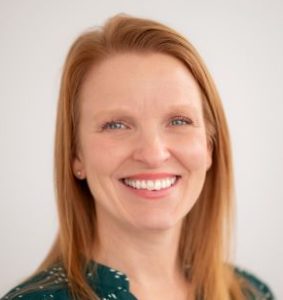
Bad news for thousands of would-be immigrants over the last two years could be great news for labor-strapped nursing homes.
The number of J-1 visas available this year is twice as high as a normal year, partly due to the government’s recent inability to approve the typical number of candidates for entry amid COVD-19 complications.
Smart providers won’t wait to tap into the potential pool created by a bigger visa exchange visitor program. Through the program, the State Department can designate providers as sponsors for individuals on specific career paths, and providers can then solicit help from far beyond our borders.
There are 280,000 visas available for 2022, according to LeadingAge’s Ruth Katz, and nursing is one of the healthcare careers identified by the U.S. for employee sponsorship.
Win-win recruitment
Going overseas for new hires isn’t a new tactic, but it may become a more important one with the U.S. skilled nursing sector down some 238,000 workers since the pandemic’s start.
From the sounds of it, there may be plenty of foreign-born nurses (and trainees) ready to assume the kind of healthcare jobs fewer and fewer Americans want these days.
AdventHealth, a Florida-based health care system trying to fill positions at nursing homes and hospitals in seven states, is already touting its ability to sponsor immigrant visas for eligible registered long-term care nurses in online ads. It’s the first time the provider has sought foreign nurses for its nursing homes, a spokesperson told The Tampa Bay Times Tuesday.
This is no message in a bottle.
Filling these jobs could be a lifeline for facilities restricting admissions because of a lack of workers. It could also be a literal lifeline to those who dream of caregiving careers in places where they will receive a wage commensurate with the valuable job they do.
And many recruits come from cultures that view the elderly as treasured members of society, unlike widespread American attitudes that often undermine the recruiting process on U.S. soil.
Even before the 2022, J-1 exchange numbers were revealed, nursing home operators were clinging to the hope of help from immigrants. Long a backbone of the sector, they are now in demand not just as potential trainees but as experienced caregivers.
Will barriers remain low?
It’s not just the operators on either coast clamoring for this influx of help.
Nate Schema, president and CEO of the South Dakota-based Evangelical Lutheran Good Samaritan Society, told me last month that an international nursing strategy is one of several key doors operators have been able to open during the current staffing crisis.
Schema’s organization, the nation’s largest nonprofit senior care provider, has plans to place more than 250 licensed nurses on its campuses starting in 2023.
“Obviously, we need our legislators to make sure that those doors are open so those things can happen and we don’t have any hiccups with visas or anything like that,” he said.
There may be language barriers and cultural adjustments to make for foreign nurses. But if they can secure a decent share of this year’s extra visas, providers also will need to make another adjustment — this one to their expectations.
There’s no guarantee the government will stretch numbers again in the future to address what will most likely still be an urgent need among long-term care providers.
Go get your workers, help them succeed, and then be ready to battle for more.
Kimberly Marselas is senior editor of McKnight’s Long-Term Care.
Opinions expressed in McKnight’s Long-Term Care News are not necessarily those of McKnight’s.



